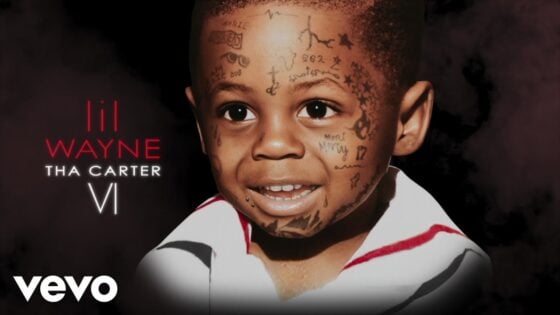Quentin Tarantino Spotlight
“It means you’re gettin’ us into that premiere “
Throughout the history of drama, stories within stories have always sought to awaken audiences to postmodern ideas by using nestled narratives, forcing viewers to recognize the transformative power of the pen. Shakespeare, most notably, was a huge fan of the concept, including plays within plays in Hamlet, Taming of the Shrew, and many more of his dramatic works. In these instances, characters within a narrative were treated to a story similarly to the audience, creating a multilayered plot that often questioned the very nature of human identity and the idea of the “self.” As time passed and modern technology gave birth to cinema, stories within stories made their way to the silver screen through the works of directors like Buster Keaton, most notably in his masterpiece, Sherlock Jr.
While not as uncommon as some would suppose, stories within stories have continued this longstanding relationship with cinema, often making larger statements about the world in which its viewers live. With his deep understanding of narratives and encyclopedic knowledge of film, Tarantino joins a centuries-old conversation, making his mark with the controversial Inglourious Basterds. Deep down, his movie is so much more than the spaghetti western WWII film that its plotline suggests, as cinema in Inglourious Basterds is used within the narrative to explore the transformative power of screenwriting, and encourage a reevaluation of the nature of identity.
Cinema in Inglourious Basterds builds upon this story-within-a-story tradition by deftly using film as a way to question the nature of time and history, particularly with his primary plot device, Nation’s Pride. In Tarantino’s fictional WWII, Nation’s Pride is a propaganda film made by Joseph Goebbels to glorify the heroic actions of Fredrick Zoller, a Nazi war hero known for killing hundreds of enemy soldiers singlehandedly to save a city. In its final construction, the film is an obvious misrepresentation of the facts of reality, as made apparent by Zoller’s uncomfortable reaction to watching it in the cinema. Although it was full of historical inaccuracy, Goebbels’ film is eaten up by his audience, particularly Hitler, who calls it “extraordinary, simply extraordinary.”
Tarantino’s Inglourious Basterds, although not blatantly propaganda, operates on the same principles as Nation’s Pride, taking historical liberties in order to craft a narrative that is visceral and appealing for his audience. Instead of portraying the reality of starved soldiers, death camps, and banal backroom meetings, Tarantino’s WWII is full of spies, double agents, explosions, as well as excessive and dramatic violence, creating fantastical events for his characters to experience. In Tarantino’s narrative world, the truth is much more boring than the fictions of his imagination, and cinema offers him a vehicle to create timelines that are significantly more exciting, but feel just as real as the world in which the audience is sitting.
Inglorious Basterds takes this notion a step further by commenting on the cinematic style “narratives” that exist within its universe, using the Basterds’ reputation as further evidence that fiction is much more exciting than reality. Because of their exploits, the Basterds gained notoriety amongst the German ranks as cold-blooded horrors, and spread fear amongst the ranks. Aldo becomes “the Apache,” Donny Donowitz is morphed into “the Bear Jew,” and Utivich becomes (humorously) “The Little Man.” In Inglourous Basterds, each of the Americans take on cinematic properties and become “characters” within the German narrative, giving them great power within the reality of the film. Even Hitler himself is afraid of this narrative force, banning these stories from being told within the German ranks in order to protect the soldiers’ psyche. It seems as though even the Basterds are aware of this narrative effect, and apparently enjoy it, with Aldo been commenting in an almost fourth-wall-breaking style that “Frankly, watchin’ Donny beat Nazis to death is the closest we ever get to goin’ to the movies.”
That being said, once the Basterds are captured, the façade fades and reality sets in. Aldo is not a savage, but an outlaw with a knife; Donowitz isn’t a monstrous golem, just a kid from New York; and the Little Man isn’t the pint-sized terror that everyone imagined. In Tarantino’s script, once the narrative of fiction is dispelled, the common reality of life will set in, and history restarts its course. Although fiction is much more exciting than the truth, fact will always regain control once the cinematic mystery is scattered.
By prominently including cinema in Inglourious Basterds, Tarantino’s film becomes a critical piece used to explore the way that film and narratives can bend the very nature of reality, metaphorically ‘changing’ the course of history for theatergoers as they watch the piece, only to drop them back into reality as the credits roll. In a way, Inglourious Basterds is a part of the centuries-old conversation on the power of cinema, joining the likes of Keaton and Shakespeare to illustrate that playwrights and screenwriters can bend the rules whenever they want, and that viewers always readily accept the fiction within the lines.
Even as a superficial WWII movie, Inglourious Basterds remains a celebration of cinema, rife with subtle nods and in-jokes, reminding viewers that film is an omnipresent force within their lives while cleverly crafting a fictional world ruled by the silver screen. To this end, cinema in Inglourious Basterds further serves as Tarantino’s love letter to its transformative power, giving him an opportunity to immortalize its ability to change the course of history, so to speak. For the director, reality and fiction cease to matter in his narrative world; instead, the most important element is the enjoyment of the audience. And if the audience has fun, does it matter if everything that they are watching is a fraud?

































